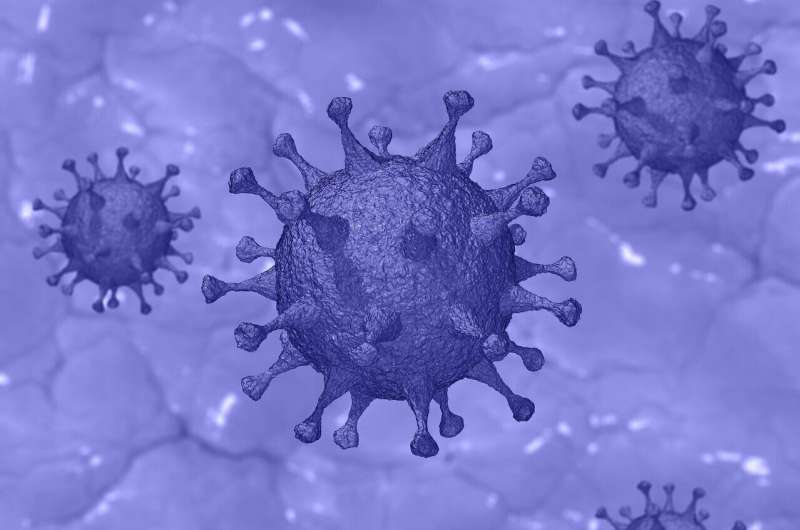Credit: CC0 Public Domain
New research presented at this week's ESCMID Congress on Coronavirus Disease (ECCVID, held online 23-25 September) shows that outbreaks of COVID-19 in elderly care homes were caused by multiple independent infections from outside, plus within care home spread. There is also evidence of transmission between residents and healthcare workers, including paramedics, possibily linking care home outbreaks to hospital outbreaks (though the direction of transmission between individuals could not be confirmed). The study is by Dr. William Hamilton, Cambridge University Hospitals NHS Foundation Trust, Cambridge, UK, and colleagues.
COVID-19 poses a major challenge to infection control in care homes. SARS-CoV-2 is readily transmitted between people in close contact and causes disproportionately severe disease in older people. Understanding the burden and transmission dynamics of COVID-19 in care home residents is therefore a public health priority.
In this study, data and SARS-CoV-2 samples were collected from patients in the East of England between 26th February and 10th May 2020, and tested at the Cambridge Public Health England Clinical Microbiology Laboratory, UK. Care home residents were identified using address search terms and Care Quality Commission registration information. Samples were genetically sequenced at the University of Cambridge or the Wellcome Sanger Institute, and viral clusters were identified within each care home based on integrated genomic and temporal differences between cases.
A total of 7,406 SARS-CoV-2 positive samples from 6,600 patients were identified, of which 1,167 (18%) were residents from 337 different care homes. 40% of the care home residents tested acutely at Cambridge University Hospitals NHS Foundation Trust (CUH) died, roughly double the unadjusted mortality rate for non-care home residents.
Genetic sequences (genomes) were available for 700/1,167 (60%) residents from 292 care homes, and 409 distinct viral clusters were defined. The largest clusters comprised more than 10 samples from the same care home, consistent with care home COVID-19 outbreaks.
"Care homes with multiple clusters suggested multiple independent viral acquisitions among residents, " say the authors. "We also identified several probable transmissions between care home residents and healthcare workers, based both in the community (carers and paramedics) and the hospital, suggesting a potential link between care home-associated and healthcare-associated COVID-19 infections."
They conclude: "We present a large genomic epidemiology study of care home-associated COVID-19 infections in the UK. Care home residents had a significant burden of COVID-19 infections and high mortality. Larger viral clusters suggested within-care home outbreaks, while multiple clusters per care home suggested independent acquisitions. Integrated genomic and epidemiological data collected at scale can provide valuable insights into SARS-CoV-2 transmission dynamics; in future, such analyses could be used for targeting public health responses."
Provided by European Society of Clinical Microbiology and Infectious Diseases























